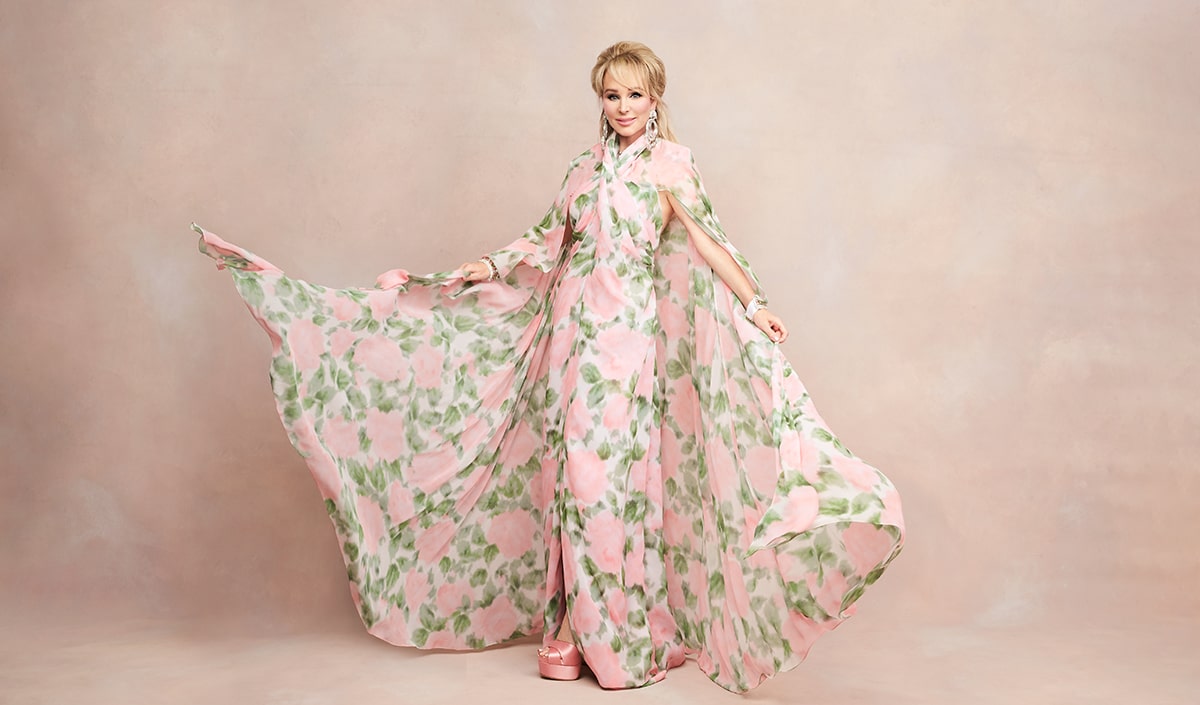Suzanne Rogers: Inspiration By Design

A five-year program renewal allows The Suzanne Rogers Fashion Institute to curate top international fashion designers.
How does creativity survive a pandemic? In a discipline that requires human engagement and the stimulation brought forth from social activity, what impact does “social distancing” and staying home have on the creative process, particularly for those involved in the arts and fashion design industries?
It’s a real question that Suzanne Rogers, honorary patron of The Suzanne Rogers Fashion Institute (SRFI) at Toronto’s Ryerson University, considered, as the SRFI recently announced a five-year program renewal that will continue to foster Canada’s exceptional world-class fashion design talent.
“I think people have to become more creative during this time,” says Rogers. “Today, designers are more focused on sustainability, as you can’t go out and shop for clothes. They are working with recycled fabrics, redesigning vintage clothing. Sustainability is important right now, using what you have in order to design a collection. The pandemic is a speed bump; it will end, and things will improve. This has been a great challenge on how to do things differently.”
Robert Ott, director of the SRFI, says the pandemic is yet another example of how creativity prevails in compromising times. “In fashion, designers have looked to new ways to design, create and share fashion. Creativity is the natural human response to adversity by bringing us together and allowing us to share common feelings and providing an outlet to escape these trying times.”
This second gift of $1 million from The Edward and Suzanne Rogers Foundation continues to enable design students and recent alumni from the School of Fashion in Ryerson’s Faculty of Communication & Design to nurture their talents and build upon their academic achievements. Founded in 2016, the SRFI is a fellowship program designed to promote, inspire, educate and invest in third- and fourth-year fashion design students to elevate their creative potential to pursue national and international opportunities.
“Fashion Is A Huge Worldwide Industry, And Canada Should Play A Bigger Role. And There Is No Reason We Can’t — Suzanne Rogers”
This is especially important because in Canada, unlike the British Design Council, government support is lacking, and designers need the stepping stone the SRFI provides. “The world knows about Canadian music, acting and comedy, and I think the government should support our incredible designers in a stronger way,” says Rogers. “Because there are no scholarships or financial support, it can get very discouraging, and many design students get lost, work in retail and choose another path.”
“What I’ve done is, bridge the gap with financial support that perhaps helps them study abroad or get international work. The results speak for themselves, as the proof is in the many achievements of our fellows. Fashion is a huge worldwide industry, and Canada should play a bigger role. And there is no reason we can’t,” she says.
Rogers, who has been described as “the fairy godmother of Canadian fashion,” works tirelessly to support young designers in the Canadian fashion industry by giving her time, effort, expertise and guidance, and her patronage of the SRFI is yet another example of giving back and mentoring the institute’s brilliant talent. She is especially encouraging to young people during these challenging times.
“Keep on being creative, because creativity does prevail,” she advises. “You have to adapt to the world and think of new ways to engage audiences. We still have to keep going and we still need to work together. Self-care is important during this time. Don’t get lost in the heaviness.”
“The generosity of the Rogers family and the Rogers Communications Inc. entities have changed the lives of hundreds of students from across our university,” says Ryerson University president and vice-chancellor Mohamed Lachemi. “From research chairs to scholarships to capital donations, their contributions have been instrumental to building Ryerson’s reputation as a leader in innovative education.”
While these turbulent times have been challenging, Ott sees many young designers as resilient, adaptive and eager to take a challenge and turn it into opportunity. “Some have turned to social media as a retail platform to sell small product drops, with an emphasis on storytelling,” observes Ott. “Others have looked at ways to transform existing products into new fashion pieces. Now is the time for young designers to demonstrate their perseverance, regardless of what life throws at them.”
As a long-time observer of fashion style and trends in the industry, Rogers has no doubt, much like how the Depression or world wars influenced fashion design, we’ll look back someday and be able to identify today’s emerging fashion style as a result of the pandemic.
“After the Spanish flu pandemic of 1918 came the Roaring Twenties and the dresses, hats and hairstyles of the flapper era, as there was a huge shift in culture,” says Rogers. “Now, everyone is casual, but when this is over people will be happy to go out more and celebrate more, and fashion will reflect that. People will be ready to go out and enjoy life again, and dressing up is a big part of that. There may be a surge of creativity, and I think we’re going to be in for a pleasant surprise.”
This optimism is part of the tone of encouragement that Rogers has brought to the SRFI. The resources provided by The Edward and Suzanne Rogers Foundation will empower emerging Canadian designers to continue to make their mark in the international world of high fashion design, ensuring that creativity can not only endure, but also flourish during challenging times.



















































































